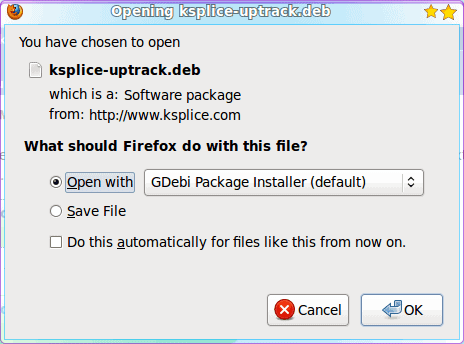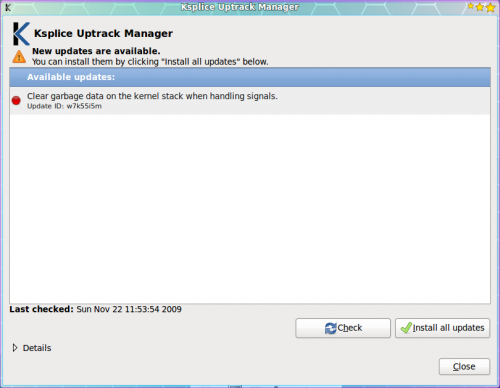At least that used to be the case. That is correct. With the help of a newly developed technology (dubbed Ksplice) even a kernel update will not require a reboot.
This is fantastic news to administrators who depend upon constant uptime for their servers and production desktops/machines.
Of course one might think such a technology would be difficult at best to use. Not so. The developers of Ksplice have created an incredibly easy to use system that allows the administrator to handle critical updates, normally requiring a reboot, as easily as those updates that do not require a reboot.
Getting such a system working does requiring the installation of third party software. This tutorial will walk you through installing Ksplice as well as how to go about updating a currently running kernel with the new system.
Installing Ksplice
To install Ksplice navigate your browser to the Ksplice Uptrack page and click on the link for your particular distribution.
If you are using Ubuntu the Gdebi installer will be an option to select from (see Figure 1) . Select Open with and then make sure GDebi is selected. Click OK and the installation will commence.
During the installation a new window will open specific to Ksplice. In this window you will have to agree to a License and then click Forward. Once you have done this the installation will complete.
Using Ksplice
After install is finished Ksplice will automatically open up the update window (see Figure 2) and reveal to you if there are any updates for your currently running kernel. This might very well remind you of the average Linux package management front-end.
In order to install the update(s) click the Install All Updates button to take care of any updates pending.
You will also notice a new icon added to your Notification Area (see Figure 3). This Icon will not only allow you to launch the
Ksplice tool, it will also keep you informed if there are any updates available. Figure 3 shows the Ksplice icon with a pending update.
When your system is up to date the “!” will disappear and leave you with a clean “K” icon.
Command line
What Linux tool is complete without a command line component? Ksplice includes four command line tools for your terminal pleasure:
- uptrack-upgrade: This command will download and install the latest kernel updates available for your system.
- uptrack-install PACKAGE: Will install a specific update (Where PACKAGE is the package name to update.)
- uptrack-remove PACKAGE : Will remove a specific update (Where PACKAGE is the package name to remove).
- uptrack-show PACKAGE: Will show more detail about a specific update (Where PACKAGE is the package name).
I have been using Linux (and computers) for quite some time. I never thought I would see the day when such a major update to the underlying sub-systems could be pulled off without a reboot. And not only that, it is done as simply as using a GUI interface.
But now we are looking at something special. Ksplice is only now beginning to make serious inroads into reaching that goal of 100% uptime. And now, without having to reboot after a major upgrade, that 100% number is looking closer and closer every day.



No comments:
Post a Comment